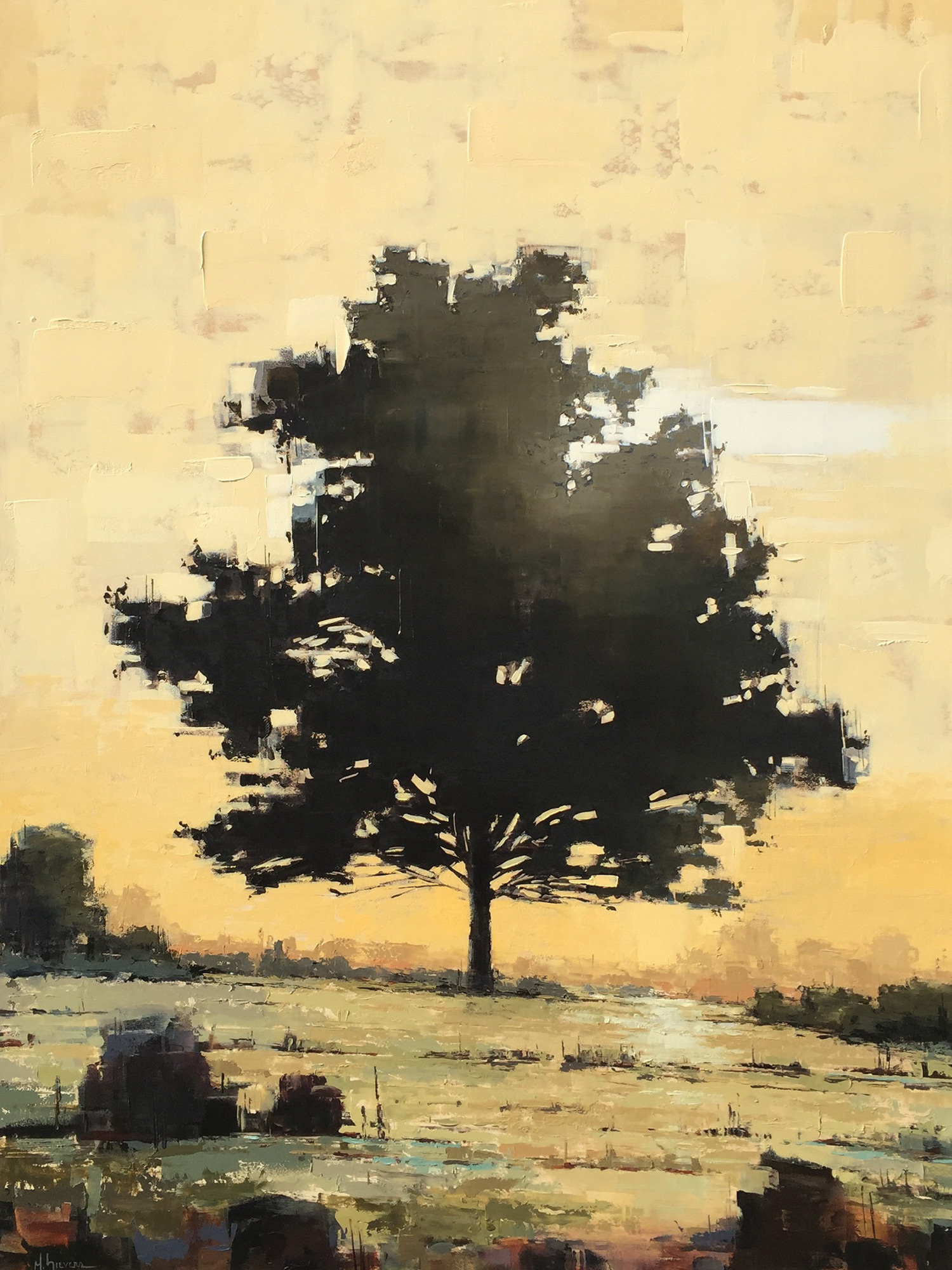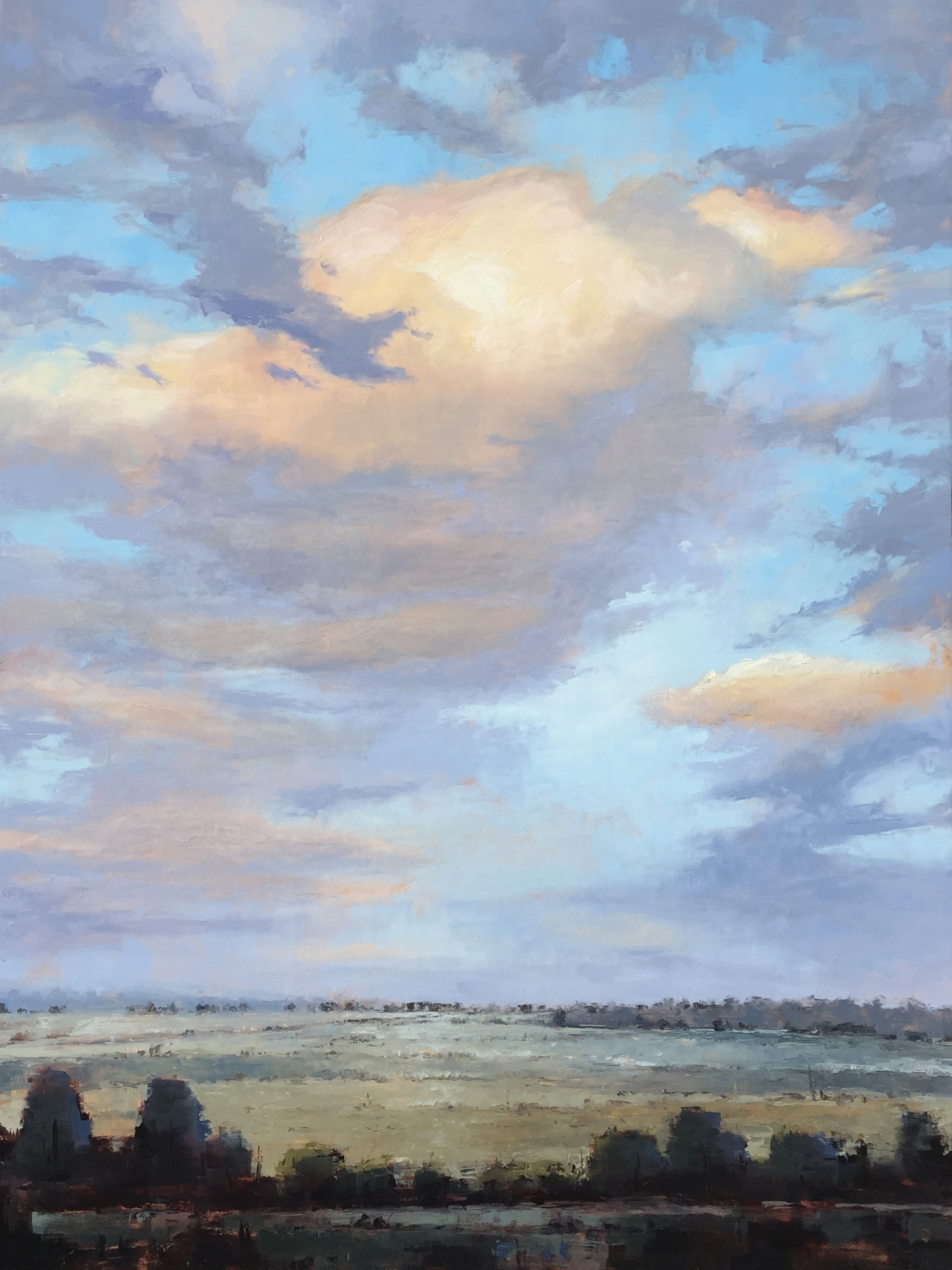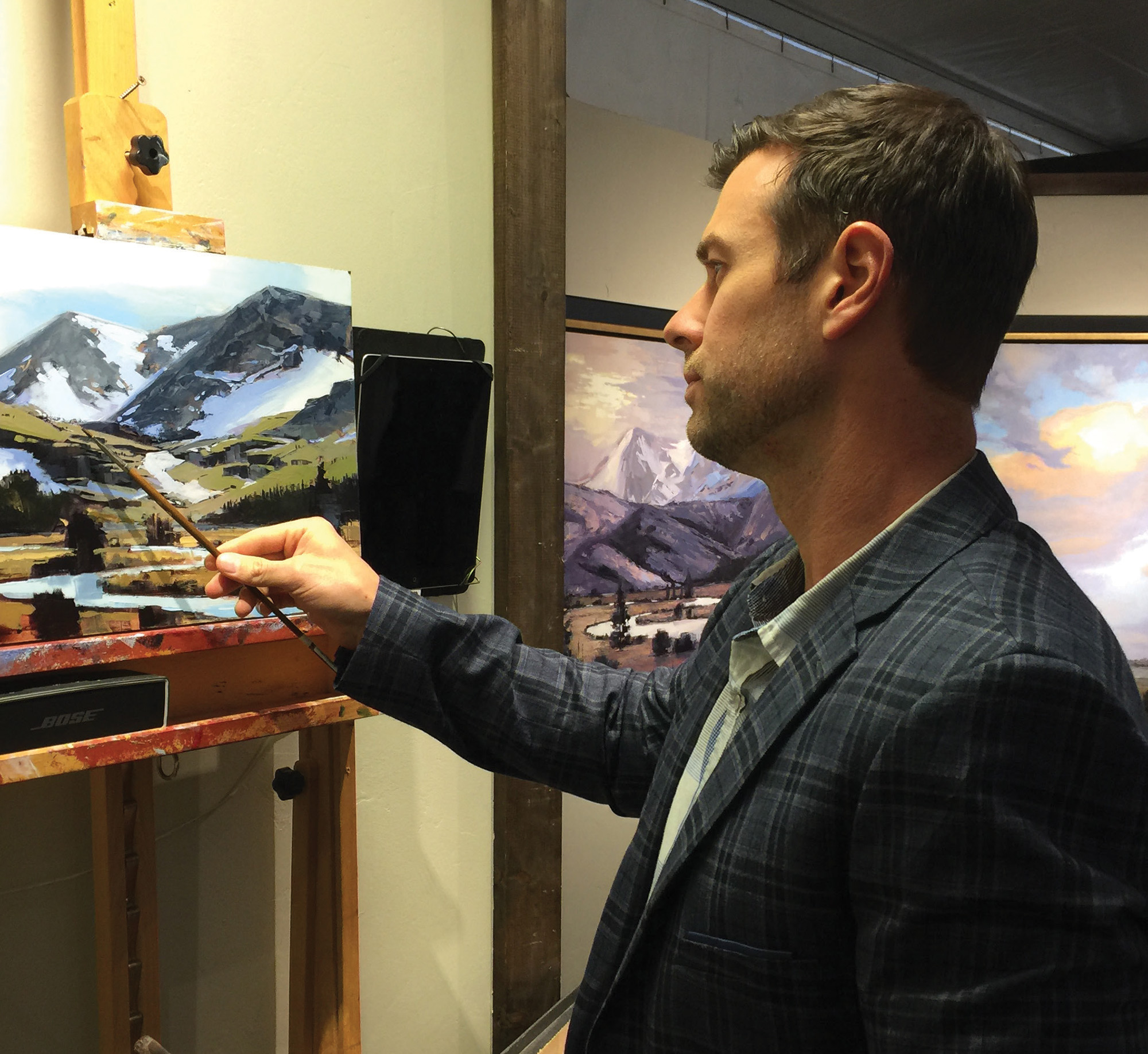
14 Mar Illuminations: Ones to watch
Artist Matthew Sievers grew up painting. His father, artist Gregory Sievers, would take him outdoors to paint when he was a child, and those memories still feed his creative process.
“There were five of us kids, and I was the only one excited about painting,” Sievers says. “For anyone else it was a chore to paint with Dad. We’d hike into Targhee National Forest, and he’d try to capture the light really quickly before it changed. Then we’d pack our paintings down the hill, trying to keep anything from smearing.”
Another time, Sievers and his father hiked in to paint the aspens. While they were working, a huge gust of wind blew, knocking tons of yellow leaves from the trees. “They stuck to the canvas and the palette,” he says. “It was a spiritual experience, and I painted a lot of aspens afterwards. That sense of being out in nature is a driving force in my painting.”
He still thinks of his father as a mentor and continues to ask him for critique. “He’s a source for growth that I use in my work,” Sievers says.
Walking in his father’s footsteps can be tough, and the more Sievers studies art, the more he feels like everything has already been done. So the artist looks for the things that speak to him, and by doing so, he has found his voice.
“I’m always photographing and painting plein air, doing field studies and using those studies to catch color,” he says. “When you photograph something, the color is never the same — it gets washed out, it goes more gray or blue. And I’m really trying to capture the emotion that nature portrays.”
Sievers’ landscapes reveal the nature of place, encompassing more than a two-dimensional version of what the eye sees. By using lighter values and warmer tones, he creates multiple perceptions of his work. “So many artists do photorealism, but that’s not what I’m about,” he says. “I’m trying to push it, layering my paintings so you can see the heart of the object — the bush, the mountain, the sunset. From a distance all those things come together; although, up close, they may seem abstract.”
Using clean marks, he portrays the edges of cliffs, the roundness of rocks. He unearths the density and sediment. “It’s one clean mark that says so much. Those are the kind of marks that make my mouth water,” he says.
Sievers lets the layers dry and comes back to a painting again and again until he feels something from it. “It’s a big process for me, and I won’t stop until it makes my heart skip a beat,” he says. “When I get a painting that makes me return to the studio just to revisit it because of that emotional connection, I know I’ve done something. For me, it’s vital that the finished painting has its own voice.”
Sievers will exhibit his work at the Oklahoma City Festival of the Arts at the end of April, and in July he will be at the Calgary Stampede in Canada. His work is represented by Blue Rain Gallery in Santa Fe, New Mexico, and Mountain Trails Gallery in Jackson Hole, Wyoming.
- “In the Spotlight” | Oil | 48 x 36 inches
- “Colorful Sky” | Oil | 36 x 48 inches
- Matthew Sievers









No Comments